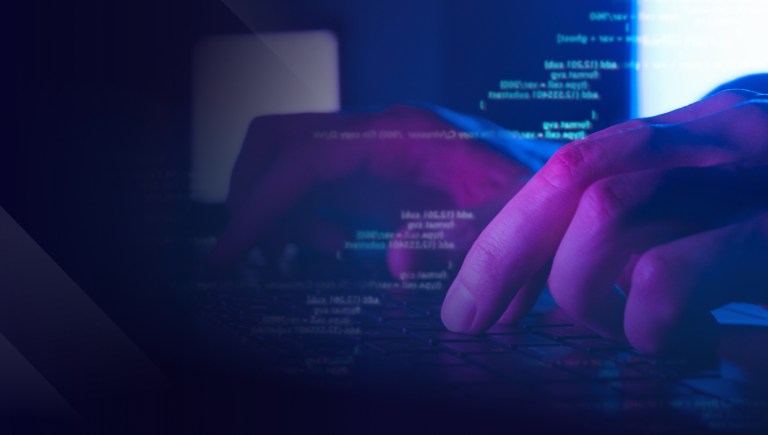Overview
For organizations, the “new normal” spawned by COVID-19 isn’t just a buzzword – it’s become a standard that demands to be met.
When the pandemic struck, businesses were thrown into disarray. Brick and mortar operations had to transition to work from home (WFH) practically overnight, and organizations faced an influx of complex demands.
Now, WFH is here to stay – in part out of necessity, in part due to the tangible benefits that remote operations offer.
But it’s one thing to stand up a remote operation, it’s another entirely to effectively future-proof that workforce for the challenges and uncertainties that lay ahead.
Moving forward, a resilient remote workforce will require a delicate balance between process and product. And the two must intertwine in a way that empowers employees while resulting in meaningful work.
In this guide, we break down what that actually looks like in practice…and how to get there.
Let’s get started.
Establishing Rules of the Road
With many organizations standing up a remote workforce nearly overnight, the employee experience came as an afterthought. Businesses rushed to implement new processes they hoped would provide certainty in an uncertain time – such as digital happy hours or tips for ergonomic workspaces.
But employee experience is more than the effectiveness of your physical environment or an occasional virtual hang out.
To cultivate positive experiences for a long-term remote workforce, organizations must apply the right mix of flexibility and structure – empowering employees to know what success looks like, while still ensuring they have input in their work lives.
So, what’s a leader to do?
- Foster mutual trust. Goodwill goes a long way. First and foremost, an effective leader conveys that they trust their employees with the newfound freedom WFH offers. By not checking in on employees at every moment, leaders demonstrate trust. They also motivate workers to remain loyal and achieve the right results.
- Let productivity prove itself. Many think remote working hinders productivity and performance. They worry about employees working less, attending to personal matters during work hours, or cutting back on communication and collaboration. However, a Stanford study¹ addressed these concerns, revealing that working from home led to a 13% increase in performance, which is nearly equivalent to an extra day of output per week. These results were likely due to employees avoiding long commutes and developing a better work-life rhythm.
So, instead of breathing down employees’ necks, leaders can rely on measurement tools to gather unbiased productivity insights and identify ways to drive even better performance. Employees will feel supported without feeling scrutinized. - Chart a path for growth. As employees become accustomed to remote work, leaders can empower them with learning and development opportunities that allow for continuous engagement and growth. By making resources accessible, wise leaders help renew employees’ focus on personal growth, inspiring them to get proactive about change. With online learning, remote employees have access to an array of opportunities to develop new skills.
Making Security a Priority
A security strategy must be a centerpiece in any business. Without it, a single cyberthreat could topple an organization overnight.
increase in cybersecurity complaints received by FBI during the COVID-19 pandemic³
Americans have worked from home during the COVID-19 pandemic⁴
of enterprises reported an increase in cyberattacks with more employees working remotely
The importance of security is only compounded in the remote space. That’s because a distributed workforce means many more potentially open endpoints and vulnerable networks for cybercriminals to compromise. Cybercriminals know this, and intend to capitalize on it. According to a survey by VMware Carbon Black², 91% of enterprises reported an increase in cyberattacks with more employees working from home amidst the coronavirus outbreak.
That’s precisely why security technology is integral to the fabric of a remote organization. Without it, businesses face a sea of advanced cyberattacks that threaten viability. If compromised, they could lose private business information or even permanently damage customer trust.
Security technology adoption is paramount, but must be done thoughtfully. It’s important to meet remote employees where they are – tailoring solutions to the devices and applications workers use regularly.
The best solution is to develop a remote-first security strategy guided by four technology pillars designed to protect employees anywhere and everywhere.
- Zero-trust approach. This requires every user, account, and device to be verified prior to obtaining access to infrastructure. It involves the strategic use of multi-factor authentication (MFA), cloud security, 24/7 SOC monitoring, and more. Plus, for organizations that face high security requirements, in-depth monitoring capabilities may also make sense.
- Need-to-know principle. Designed to minimize risk and provide ultimate data protection, a solution based on this principle features sensitive data masking, full disk encryption, 100% encrypted communications, and data loss prevention.
- Authenticated, secure devices. Remote employees have a lot of devices, on a lot of different networks. Businesses must adopt technology that ensures every single last device has a baseline level of protection on it. This includes advanced endpoint protection, enterprise mobility management, VDI and secure remote worker software, agent-only “views” data, and locked down configuration.
- A strong security culture. Employee training isn’t just crucial for workplace experience, it’s integral for saving an organization from cyberthreats. Employees need to be regularly trained on security best practices and know-how, which can mean anything from phishing simulation drills to “do’s & don’ts” campaigns to a risk/bug bounty.
employee performance increase from remote working¹
of companies plan to permanently shift some on-site employees to remote⁵
Harrassment
Offensive content
Designing a Tech Stack for Sustainability
Yes, technology is the backbone of every modern organization! But it’s absolutely essential to day-to-day operations at a remote organization.
And while leaders know these tools are business-critical, it’s really hard to determine what solutions need to be applied to create longevity.
To guide the adoption journey, a strategic roadmap is a must. A road mapping exercise identifies gaps and impediments to progress, informing next steps based solely off of perceived risk and investment. It prevents adoption for adoption’s sake, filtering technology through a strategic and business value lens. For a true zoomed out perspective, organizations should tap a third-party provider to examine the operation from start to finish — assessing what technology needs to be applied, where and when.
By attaining a comprehensive blueprint of their business, organizations are ready to build a technology stack that’s ready for tomorrow’s challenges, tailored to the obstacles remote workers often face – such as lack of visibility and effective collaboration.
Some of these key technologies may include:
- Modern hardware and software for a high-quality user experience.
- A strong network to ensure work remains uninterrupted.
- Cloud technology that empowers effective collaboration across teams.
- Assistance tools that aid employees in overcoming many of the challenges that often arise in remote environments, such as security, remote support, hardware, training, and more.
- Workflow routing and work allocation tools that help disperse tasks across teams for efficiency and support.
An integrated, modular set of technologies can enable an organization to rapidly deploy a feature rich and secure work at home environment to any employee, anytime.
Ready for Remote
Providing remote work options for employees will enable businesses to innovate and uncover new avenues for revenue in our evolving world. It fosters resilience delivered dynamically, anywhere in the world.
By partnering with Sutherland to ensure an effective remote strategy is in place, businesses can implement a better, more sustainable way of doing things. At Sutherland, we have the people, perspective and platforms (like our Sutherland Anywhere remote work solution or our Sutherland Sentinel AI® security product) that can help.
The end result? Happier employees, meaningful work, and secure infrastructure. Organizations will remain viable, while employees and customers alike will benefit from experiences that are engineered for the future.
Let Sutherland help your organization cultivate a competitive advantage



